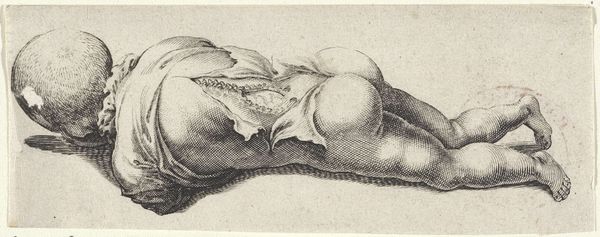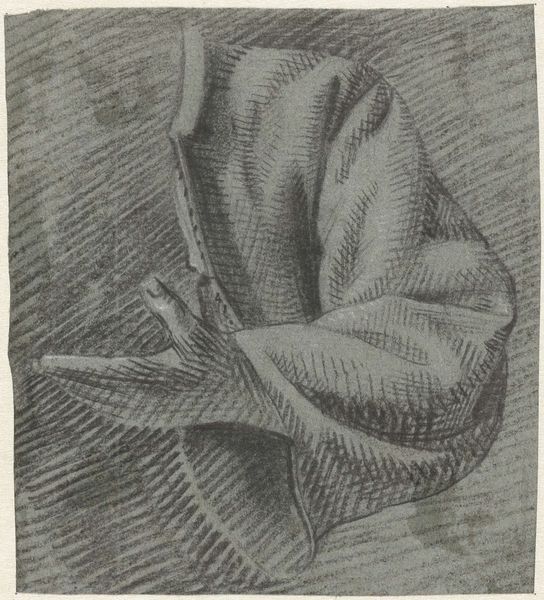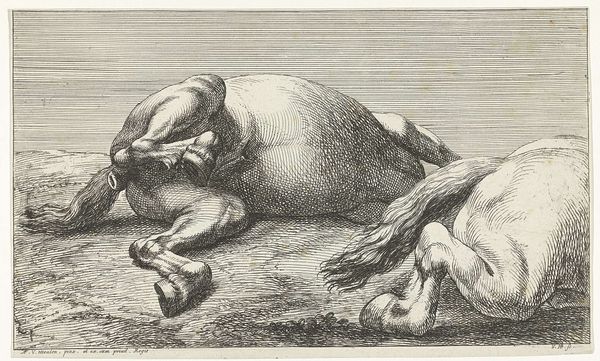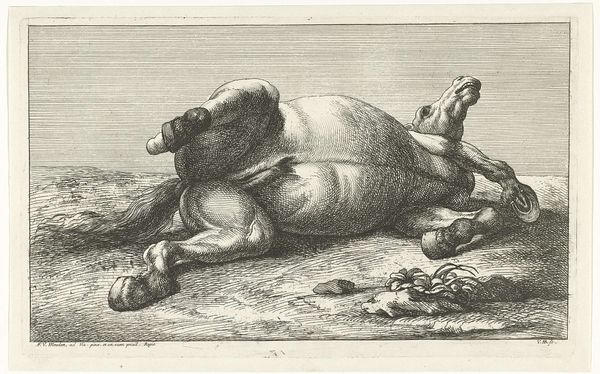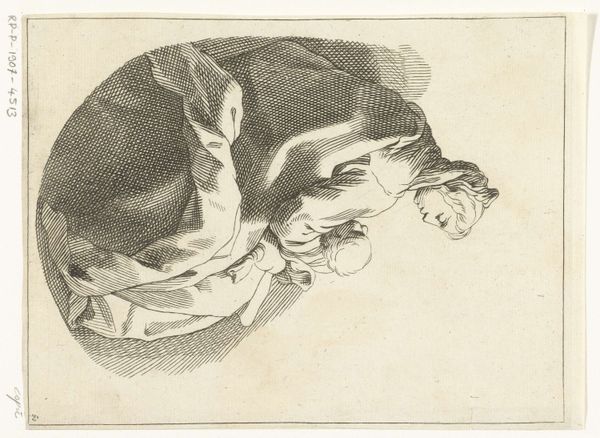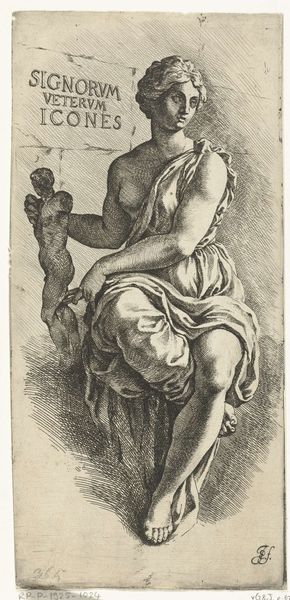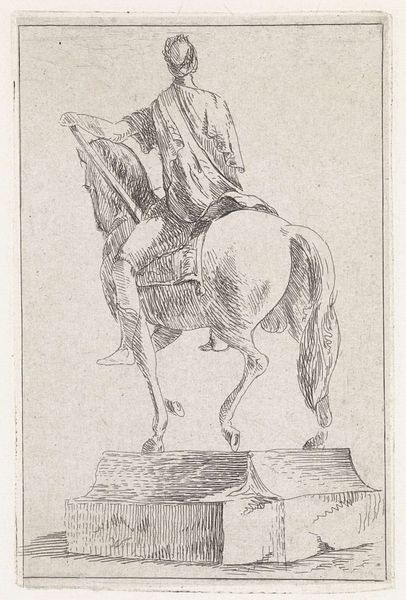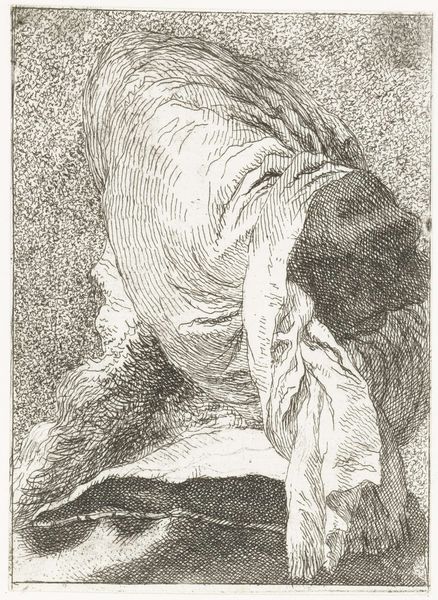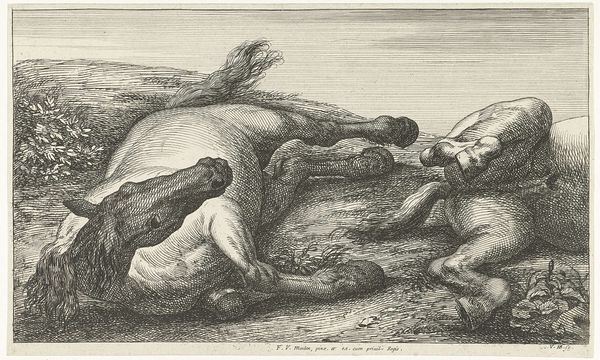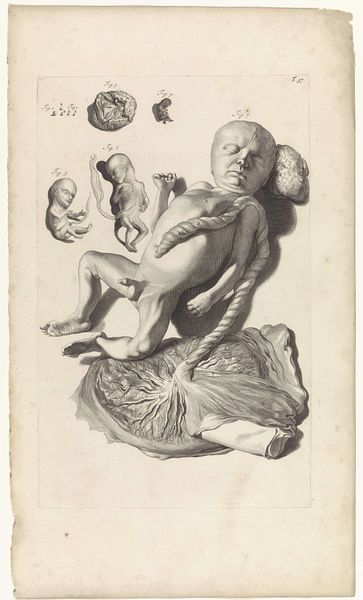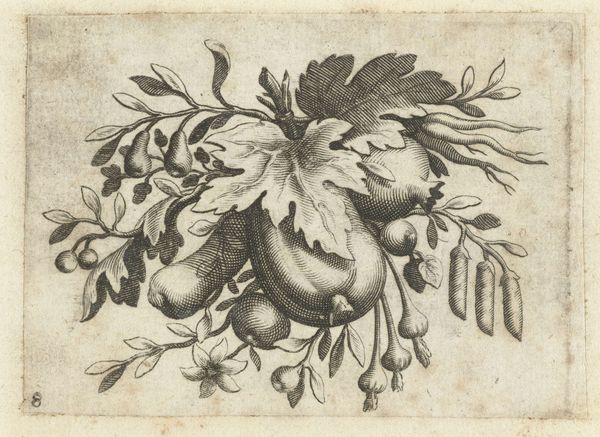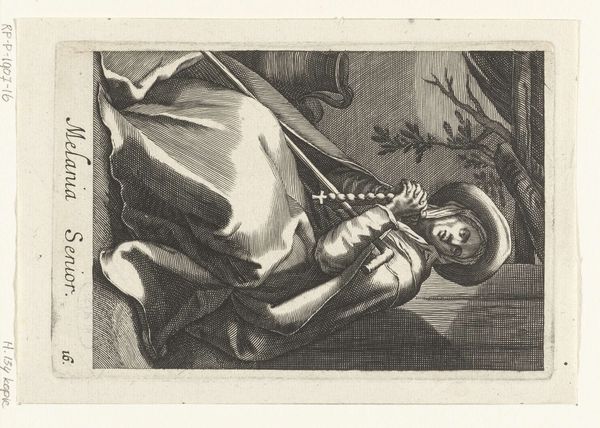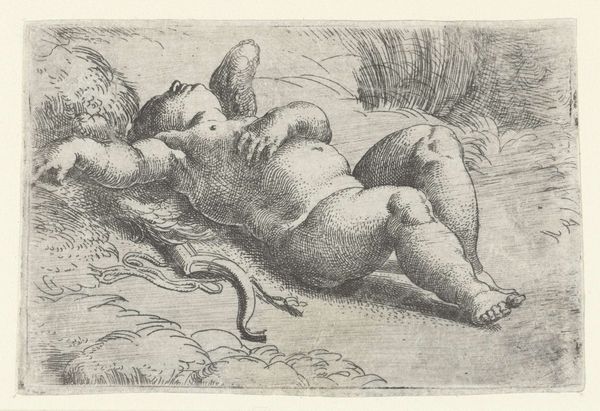
print, engraving
#
baroque
# print
#
pencil drawing
#
line
#
engraving
#
realism
Dimensions: height 91 mm, width 142 mm
Copyright: Rijks Museum: Open Domain
Curator: Up next we have "Schelp, strombus gigas," a print made between 1644 and 1652 by Wenceslaus Hollar, currently held in the Rijksmuseum collection. Hollar was a prolific printmaker, and this is one example of his interest in the natural world. Editor: What immediately strikes me is its stark realism—almost hyperreal—but presented with the rigid lines of the engraving technique. There's a tension there between the natural, organic form and the very mechanical, repetitive labour that produced it. Curator: Exactly. Look at the detail. He is rendering something organic with inorganic means. Consider the access to these shells—this Strombus gigas. It would have been a rare, imported object. The engraving would then serve to reproduce and distribute it widely, as prints were much easier to disseminate. Editor: The shell itself would carry socio-economic implications, certainly tied to colonialism and trade routes. I wonder who this conch was ultimately *for*. A scientist studying natural specimens? A collector of rarities to display wealth? Or was it purely an artistic study, detached from immediate economic desires? Curator: I suspect it was all of those things to varying degrees. Hollar was part of a network. Prints were sold, collected in albums, bound into books. The consumption of prints as disseminators of scientific and artistic knowledge was substantial. They democratized image production while also perpetuating economic systems that enabled it. Editor: I'm still stuck on the implications of choosing *this* particular object. Was there a specific story about who might have been displaced, or the work they may have endured, for it to land on his studio table in Holland and then later preserved onto an etching plate? It's quite humbling when you consider these implications. Curator: I agree. And it challenges our conception of how prints like this fit into Baroque art production and scientific study. It's so much more layered than just pretty natural history illustrations, wouldn't you say? Editor: Absolutely. This image embodies a complicated intersection of labor, scientific exploration, global commerce, and artistic intent, which makes it something of an artifact within an artifact.
Comments
No comments
Be the first to comment and join the conversation on the ultimate creative platform.
